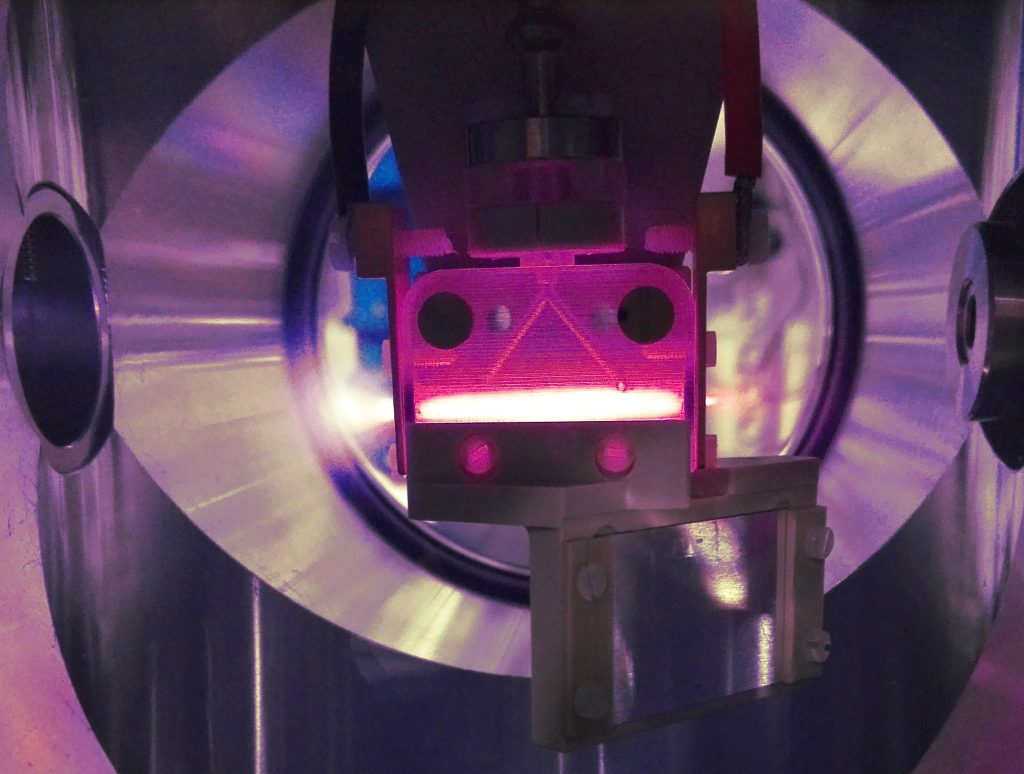Plasma-based technology promises a tremendous reduction in size of accelerators used for research, medical, and industrial applications, making it possible to develop tabletop machines accessible to a broad scientific community.
The SPARC_LAB group has recently demonstrated that a plasma-lens device can be used in an accelerator facility to strongly focus an electron beam, squeezing its size down to few microns.
Such a tool, known as active-plasma lens, consists of a neutral gas confined in a narrow structure like a capillary. The gas is then ionized into a plasma by a current-discharge flowing through the capillary itself. According to the Ampère law, the discharge induces an azimuthal magnetic field whose strength is directly proportional to the flowing current. As a reference, a 100 A current flowing into a 100 μm hole diameter capillary is able to generate magnetic gradients as large as 1 kT/m, i.e. approximately one order of magnitude larger than the strongest available quadrupoles.
Such a magnetic field can then be used to focus particle beams and replace conventional devices (like solenoids and quadrupoles) with more compact structures. The SPARC_LAB team has developed an active-plasma lens consisting of a 3 cm-long capillary with 1 mm hole diameter. The plasma is produced by ionizing Hydrogen gas with a 20 kV discharge. The experimental setup has been installed at the end of the SPARC linac (see Figure 1) and the first tests started in 2016. At that time the main finding was the observation of a strong degradation of the beam emittance [1,2]. Such an effect limited the overall beam focusing to minimum spot sizes of 24 μm.
Further tests and theoretical investigations determined that such a behavior was mainly due to non-uniformities on the plasma when driven by low currents (~100 A). With the aim to overcome such a limit, the peak current has been increased up to 230 A by developing a new discharge pulser. With the new setup, the data acquired at the end of 2017 proved that a better focusing was achieved (17 μm spot sizes) and emittance preserved downstream the plasma lens [3].
These results represent a fundamental step toward the development of next-generation focusing optics and demonstrate their effective usability in view of new compact facilities.

1. R. Pompili, et al., Applied Physics Letters 110, 104101 (2017)
2. A. Marocchino et al., Applied Physics Letters 111, 184101 (2017)
3. R. Pompili et al., Phys. Rev. Lett. 121, 174801 (2018)
 INFN-LNF Laboratori Nazionali di Frascati
INFN-LNF Laboratori Nazionali di Frascati